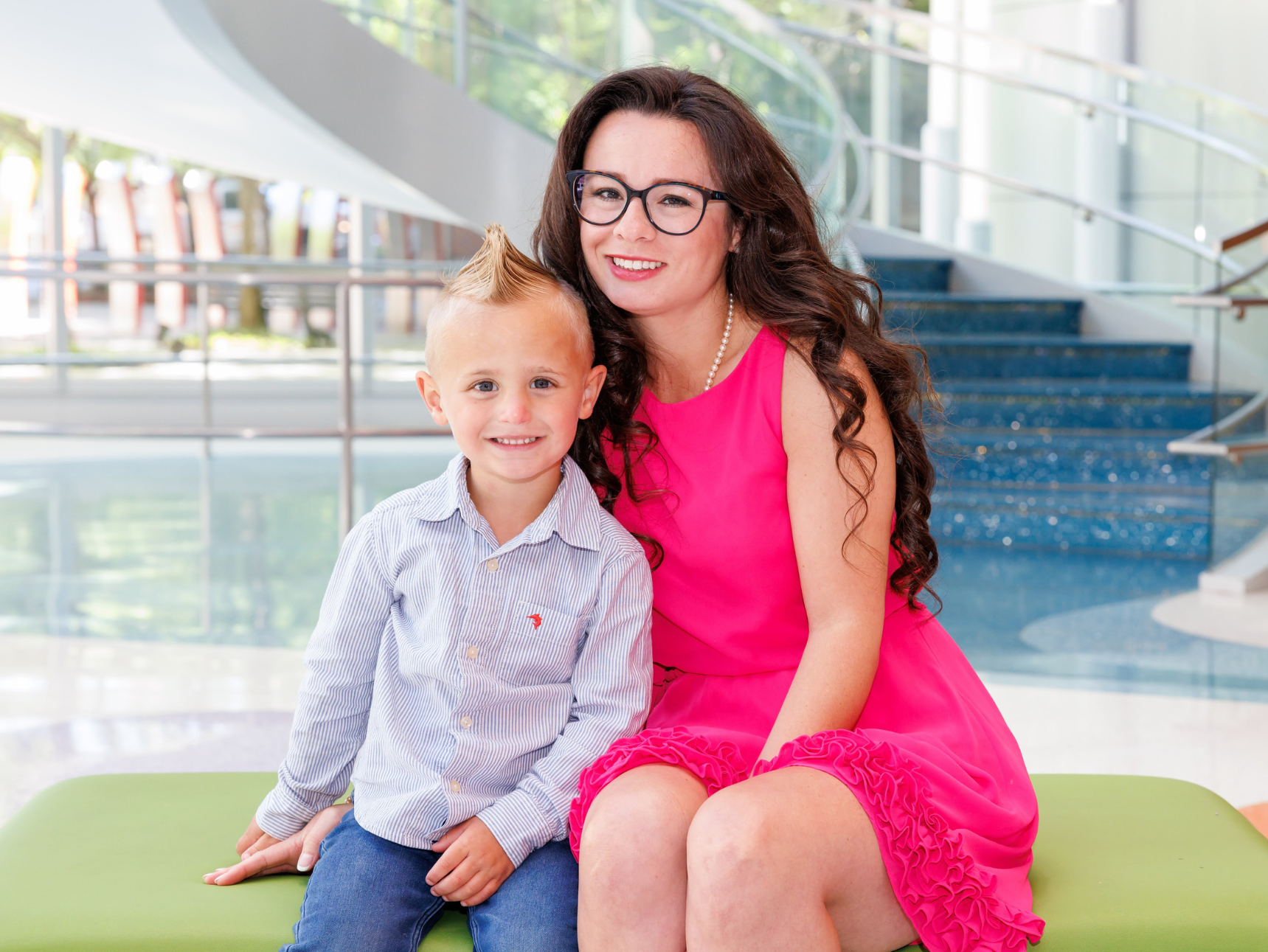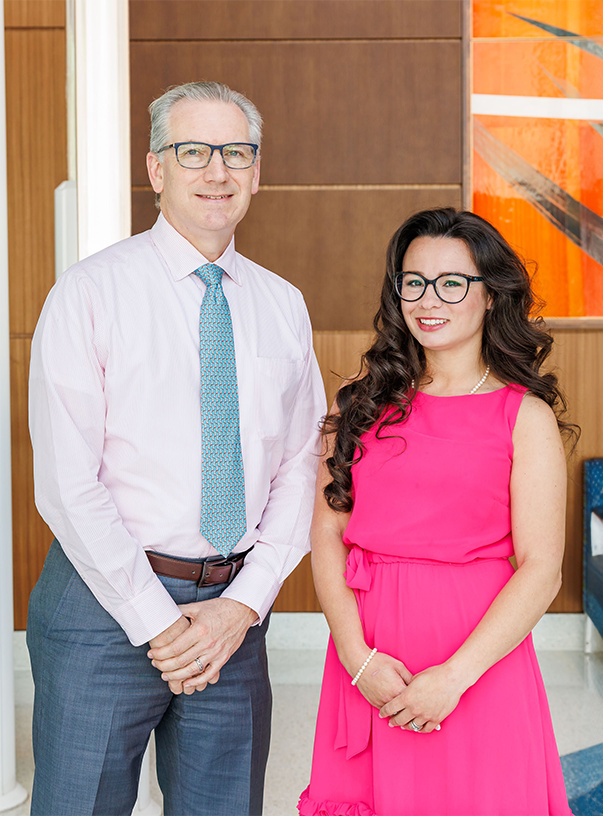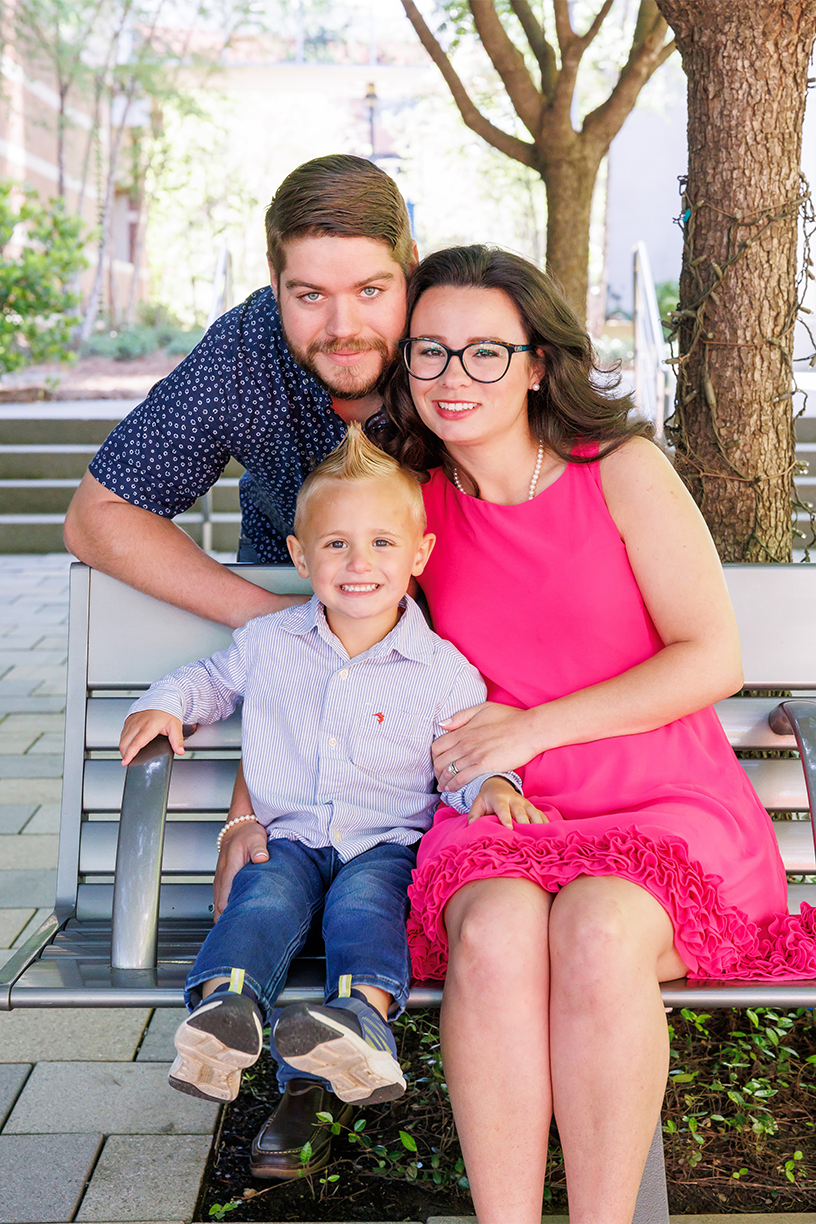 It was 2006, a softball game in Mobile, Alabama, was in full swing, and 10-year-old Cathryn Cazalas was experiencing her first seizure. Little did she know, she would end up at Children’s of Alabama five years later taking her first steps on a long road to recovery.
It was 2006, a softball game in Mobile, Alabama, was in full swing, and 10-year-old Cathryn Cazalas was experiencing her first seizure. Little did she know, she would end up at Children’s of Alabama five years later taking her first steps on a long road to recovery.
Eager to understand what their daughter was suddenly facing, Cazalas’s parents took her to see a local neurologist who confirmed the diagnosis they already feared: epilepsy.
When local specialists were no longer able to treat Cazalas, she was referred to Children’s of Alabama, where she met University of Alabama at Birmingham Department of Pediatrics Professor Monisha Goyal, M.D., for the first time.
The turning point
Within one week of her initial visit, Goyal was able to identify the source of Cazalas’s right temporal lobe epilepsy, something that previous specialists had not been able to do in four years. Cazalas’s drug-resistant epilepsy was caused by mesial temporal sclerosis (MTS). Patients with MTS have scarring deep in the brain’s temporal lobe where memories and emotions are processed.
Because medication failed to control Cazalas’s seizure activity, Goyal recommended she meet with a neurosurgeon for a surgical evaluation.
 In August of 2011, Curtis J. Rozzelle, M.D., a professor in the Department of Neurosurgery, performed a right anterior temporal lobectomy on Cazalas.
In August of 2011, Curtis J. Rozzelle, M.D., a professor in the Department of Neurosurgery, performed a right anterior temporal lobectomy on Cazalas.
“I remember Dr. Rozzelle talking about all the complications and the scary stuff that could happen during surgery. I was super afraid, but the tears didn’t hit me until I laid on the operating table,” said Cazalas. “All I could ask was, ‘Am I going to die?’”
On the morning of the surgery, Rozzelle came into Cazalas’s hospital room. Before leaving, he wrote his initials on the right side of Cazalas’s head where he would be operating. When Cazalas asked why he had done that, Rozzelle joked, “So I won’t forget which side to operate on.” When he left the room, Cazalas’s mother laughed, knowing that her daughter was in good hands with Rozzelle.
During the procedure, Rozzelle removed the portion of Cazalas’s temporal lobe where her seizures originated.
Living in fear
Before receiving treatment at Children’s of Alabama, Cazalas lived in fear of her future, constantly reminded of all the things she would never be able to do. “I was told I wouldn’t ever drive or live on my own, all the things that my friends were able to do,” said Cazalas. “I felt like my life would never be worth living.”
As a child living with uncontrolled epilepsy, Cazalas recalled feeling embarrassed when she would have a seizure in public. “Having seizures in middle school in front of the whole class was horrible and I was bullied because of it…I missed out on so much that normal kids got to do.”
Adopting hope
After a six-week recovery, Cazalas was seizure-free and cleared to carry on a “normal” life. Going through brain surgery at 15 years old, Cazalas believes, is what made her resilient and grateful for life. “There’s always something to live for and there’s always a light at the end of the tunnel,” said Cazalas.
Despite being told all the things she would never be able to do, Cazalas successfully passed her driving test, graduated high school, got married and became a mother.
Cazalas remembers the encouragement she received from her parents throughout her journey with epilepsy, calling them her “biggest support group during surgery and for years after.”
At age 18, Cazalas gained an additional support person and later married him.
Shared struggles
Cazalas and her high school sweetheart, Cameron, have three children – two biological and one adopted.
 The Cazalases decided to become foster parents while living in Georgia, and they have since fostered more than 60 children, including their adopted son, Lincoln.
The Cazalases decided to become foster parents while living in Georgia, and they have since fostered more than 60 children, including their adopted son, Lincoln.
Lincoln, Cazalas’s youngest son, was the first child the Cazalases ever fostered. “We took him in and never looked back,” said Cazalas.
For Cazalas, being Lincoln’s mother was more than just a role – it was a calling.
At only two years old, Lincoln had his first seizure. “I found my baby on the floor, unconscious,” recalled Cazalas. “I knew I needed to call 9-1-1, but I couldn’t find my phone. It was sitting right beside me. I couldn’t think straight.”
With her husband across the world in Germany on a military assignment, Cazalas went to the hospital with her son, where, just like his mother, Lincoln received an epilepsy diagnosis.
“I was terrified when Cathryn called me. I was nowhere close to home, and there was nothing I could do,” said Cameron.
Despite the sadness and uncertainty she felt in the wake of her son’s diagnosis, Cazalas was thankful for her personal experience with epilepsy.
She remained steadfast in her belief that everything happens for a reason, and that she was exactly where she was meant to be.
“I was prepared and educated on this specific diagnosis because I had lived through it,” said Cazalas. “I know I was meant to be Lincoln’s mom. It’s a God thing.”
Choosing Children’s
In April 2024, Cazalas and her husband brought Lincoln to Children’s of Alabama, the same hospital that had once changed Cazalas’s life.
As fate would have it, Goyal was now caring for Lincoln, more than a decade after seeing his mother as a patient.
The Cazalases checked in to the epilepsy monitoring unit (EMU) at Children’s, where Lincoln spent three days connected to an electroencephalography (EEG) monitor.
Before returning home to Mobile, the Cazalas family received the news they had hoped for. Goyal determined that, based on his EEG, Lincoln no longer needed to take epilepsy medication.
“If it wasn’t for Dr. Goyal, Lincoln would still be on medicines that he didn’t need,” said Cazalas.
Satisfied with Lincoln’s positive experience with Goyal, Cazalas said, “I didn’t know much about Children’s before I became a patient because I was still so young, but after being treated and cleared by Children’s, I believe it is the absolute best hospital and the only one I would send my children to.”
Inspired to thrive
While Cazalas has been seizure-free for 13 years now, she still deals with the long-term effects of childhood epilepsy, like emotional trauma and difficulties with short-term memory.
Even as a patient in the face of adversity, Cazalas reminded herself, “You have to keep going no matter how sad or hopeless you feel.”
To give back to the community of children facing an epilepsy diagnosis, Cazalas began making head wraps with colorful prints that cover EEG electrodes. She has now donated dozens of wraps to EMUs across Alabama.
As Cazalas looks towards the future, she remains grateful for the support of her family, the care of Children's of Alabama and the life-changing treatment provided to her and her son by Goyal and Rozzelle.